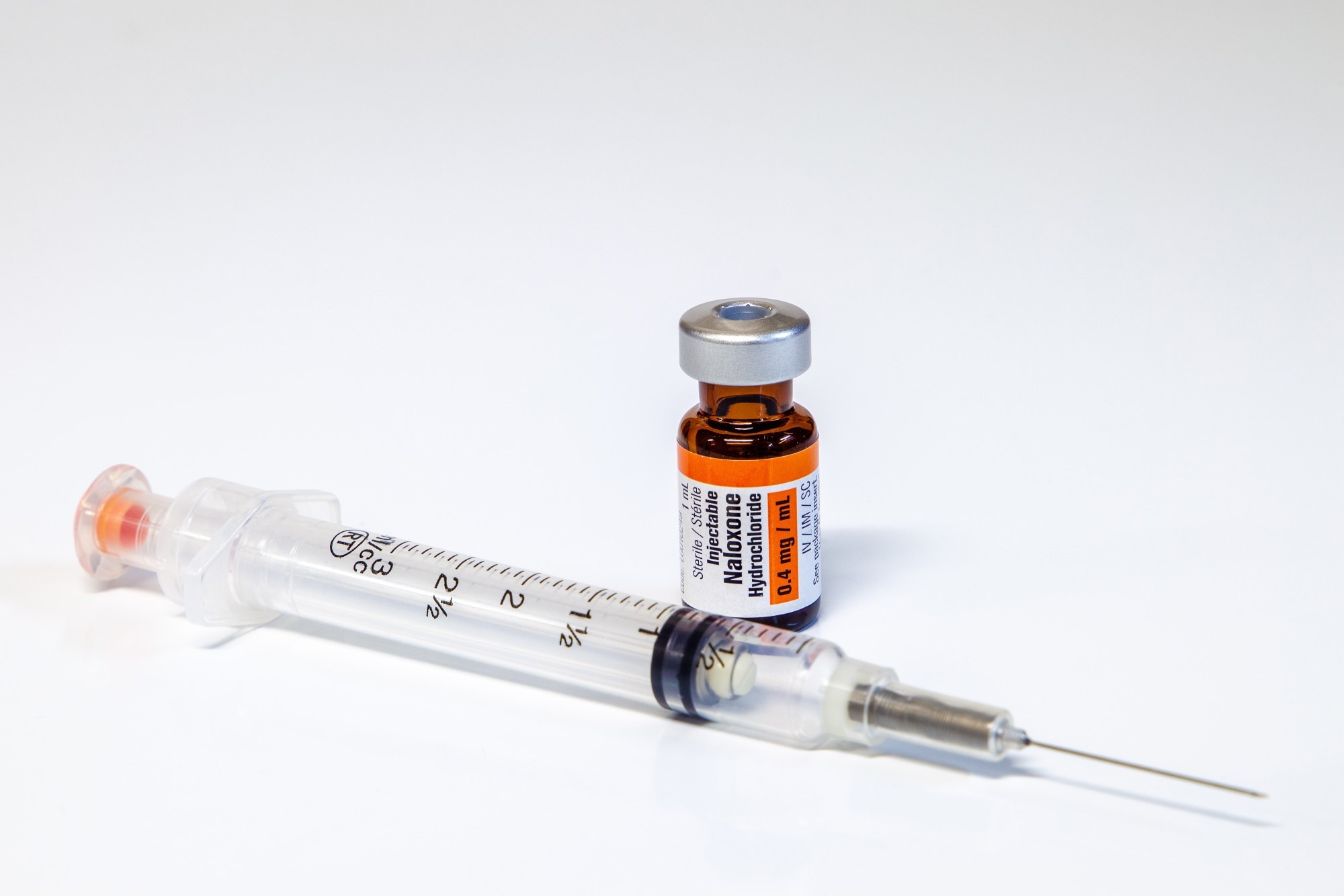They also examined the benefits of high-dose naloxone formulations as a solution for fentanyl overdoses.
 Study: High-Dose Naloxone Formulations Are Not as Essential as We Thought. Image Credit: Tomas Nevesely/Shutterstock.com
Study: High-Dose Naloxone Formulations Are Not as Essential as We Thought. Image Credit: Tomas Nevesely/Shutterstock.com

 *Important notice: medRxiv publishes preliminary scientific reports that are not peer-reviewed and, therefore, should not be regarded as conclusive, guide clinical practice/health-related behavior, or treated as established information.
*Important notice: medRxiv publishes preliminary scientific reports that are not peer-reviewed and, therefore, should not be regarded as conclusive, guide clinical practice/health-related behavior, or treated as established information.
Background
The opioid receptor antagonist naloxone hydrochloride or naloxone has been a significant development in limiting opioid overdose-related deaths and reversing the effects of the overdose.
Opioid receptor antagonists inhibit opioid receptors in the peripheral and central nervous systems and successfully counteract the expected effects, such as euphoria and analgesia, and the inadvertent consequences that lead to death, such as respiratory arrest and coma.
The United States (U.S.) Food and Drug Administration (FDA) has approved the use of intranasal or intramuscular injectable forms and intranasal sprays of standard-dose naloxone, and these are available as part of the harm reduction programs for people who use drugs.
Furthermore, due to the increasing potency of fentanyl and its analogs, the FDA supports the production of high-dose naloxone formulations despite concerns about its usage.
Addressing the stigma associated with drug use and including people with drug and substance use disorders in the processes related to formulating policies on drug use could significantly improve the understanding of the factors that contribute to drug use and the efficacy of interventions.
About the study
Harm reductionists reported on the effectiveness of the intranasal naloxone spray in reviving an overdosed individual.
However, in many successful cases, a single dose of the intramuscular injectable naloxone was sufficient to revive the individual.
High-dose naloxone formulations were reported to be significantly more expensive and cause worse precipitated withdrawal symptoms. Given the absence of clarity regarding high-dose naloxone formulations, the researchers conducted an exhaustive literature review using key phrases about naloxone usage, formulation, and dosing.
Only original articles published in peer-reviewed journals between 2012 and 2023 were included in the review. Studies that focused on unrelated concepts such as buprenorphine, included computer or animal models or discussed specific health disorders or diagnoses were excluded.
Furthermore, articles that involved pharmaceutical company consultants or were funded by companies that manufacture naloxone were analyzed and discussed in a separate section.
Results
The findings of the literature review were broadly classified into three categories based on the frequency at which more than two of the standard intramuscular or intranasal doses of naloxone are required to reverse an overdose of fentanyl and the evidence for and against high-dose naloxone formulations.
The requirement for multiple standard doses of naloxone depends on factors such as the type, method, and quantity of opioids used, individual tolerance levels for those opioids, the overall health conditions of the opioid user, and the route of naloxone administration.
The researchers found that although high-dose naloxone formulations have been used in the clinical as well as community settings, standard intramuscular doses of naloxone are sufficient to reverse most fentanyl overdoses, with overdoses of carfentanil and other fentanyl analogs that are more potent requiring three or more naloxone doses.
The more potent analogs might require higher doses because of the slower opioid receptor dissociation rate.
Furthermore, the review unearthed various studies that reported a higher risk of precipitated withdrawal associated with the use of high-dose naloxone formulations, with a significant risk of recurrence of the symptoms of overdose even after resuscitation.
However, the researchers note that in cases where more than two doses of the standard intranasal or intramuscular naloxone are unavailable, the high-dose naloxone formulations can be valuable in rapidly reversing the symptoms of carfentanil overdose.
Given the findings, the researchers recommend that at least four doses of the standard intramuscular or intranasal naloxone doses be provided, along with appropriate training for administration to potential bystanders, and care be taken to ensure sufficient intervals between each dose.
Conclusions
Overall, the findings suggested that the standard doses of naloxone, administered intranasally or intramuscularly, were sufficient to reverse the symptoms of most fentanyl overdoses, with more than two doses required for some of the more potent fentanyl analogs such as carfentanil.
However, the high-dose naloxone formulations seemed counterproductive, with a higher risk of precipitated withdrawal symptoms.

 *Important notice: medRxiv publishes preliminary scientific reports that are not peer-reviewed and, therefore, should not be regarded as conclusive, guide clinical practice/health-related behavior, or treated as established information.
*Important notice: medRxiv publishes preliminary scientific reports that are not peer-reviewed and, therefore, should not be regarded as conclusive, guide clinical practice/health-related behavior, or treated as established information.